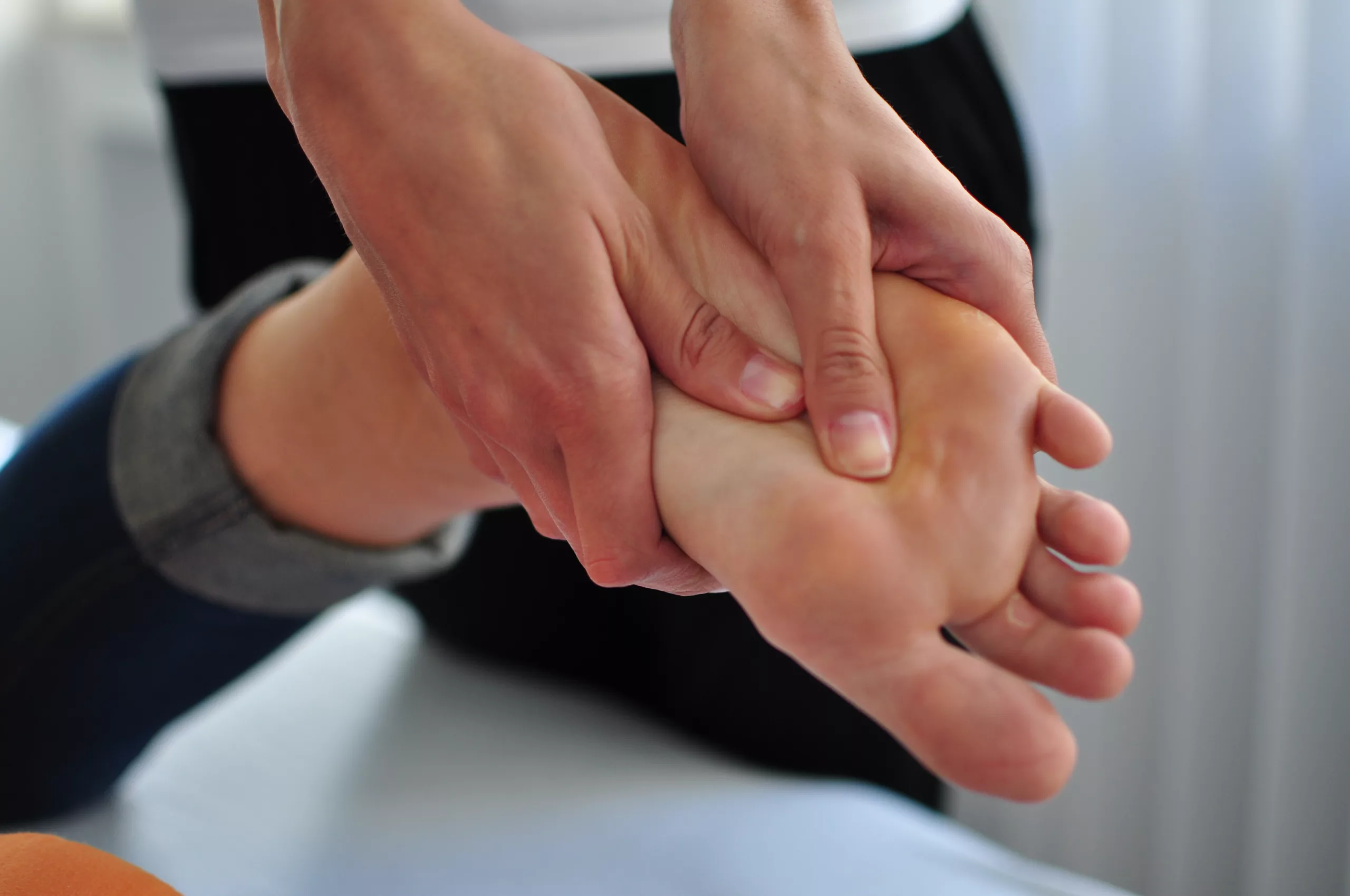
Conquering Plantar Fasciitis: Your Guide to Relief and Recovery
Are sharp pains in your foot making your favorite activities a challenge? You might be dealing with plantar fasciitis, a common condition that leads to discomfort in the heel. This pain emerges from the irritation or damage of the tissue supporting your foot’s arch, affecting your daily activities and overall quality of life. But there’s hope! In this blog post, we’ll discuss what plantar fasciitis is, its risk factors, and symptoms. We will also explore effective strategies for relief and recovery, allowing you to reclaim your active lifestyle.
Understanding Plantar Fasciitis and Its Impact:
Plantar fasciitis affects the plantar fascia – the fibrous band of connective tissue running from your heel to your toes. This tissue supports the arch of your foot and absorbs shock. However, repeated actions such as walking or running can cause this tissue to develop small tears, leading to plantar fasciitis.
Risk Factors for Plantar Fasciitis:
The likelihood of developing plantar fasciitis increases due to factors such as:
– Regular participation in high-impact activities.
– Higher body mass index (BMI >30).
– Flat feet or high arches.
– Tight calf muscles and limited ankle mobility.
– Improper footwear.
– Feet that roll inward excessively when walking or running.
– One leg being slightly longer than the other.
Recognizing Symptoms of Plantar Fasciitis:
Those grappling with plantar fasciitis typically experience symptoms such as:
– Pain at the bottom of the foot, specifically in the heel area.
– Pain that worsens with the first steps after waking or a long rest.
– Altered walking pattern to avoid pressure on the painful foot.
– The development of heel spurs, bony growths in the heel area.
– Difficulty in upward bending of the ankle due to calf muscle tightness and limited ankle mobility.
Physiotherapy: A Helping Hand to Manage Plantar Fasciitis:
If you’re experiencing plantar fasciitis, physiotherapy may significantly aid your recovery. Through a combination of manual therapy techniques and exercises, physiotherapists can help alleviate pain, improve function, and restore mobility. Here, we’ll explore physiotherapy treatment approaches, the manual therapy techniques used, and the specific exercises that can form part of your tailored treatment plan.
Physiotherapy Treatment Approach:
Physiotherapists prioritize patient education, providing vital information about plantar fasciitis, including activity modification, suitable footwear selection, and loading suggestions during the early stages. Shoes or insoles with arch support or custom foot orthoses may be recommended to improve foot mechanics and ease discomfort. Non-weight-bearing activities like swimming or cycling can minimize pain and facilitate healing. Stretching and strengthening exercises, focusing on the plantar fascia, calf muscles (gastrocsoleus complex), and intrinsic foot muscles are crucial to the treatment plan. Short-term interventions like taping or overnight splinting may also be used for pain relief and improved ankle positioning during sleep, facilitating passive stretching of the calf muscles and plantar fascia.
Manual Therapy Techniques:
Physiotherapists use manual therapy techniques to address plantar fasciitis. These may include:
– Joint mobilizations: Techniques that improve joint mobility and reduce pain, such as gliding movements of the ankle and subtalar joints.
– Myofascial and trigger point therapy: Applying pressure to release tension and address trigger points in the calf muscles.
– Soft tissue mobilization: Gentle techniques to reduce tightness and promote healing in the gastrocsoleus complex and plantar fascia.
– Cross-friction massage: Stimulating blood flow, breaking down scar tissue, and promoting tissue healing in the plantar fascia.
Exercises:
Incorporating exercises into your treatment plan is crucial for managing plantar fasciitis. Your physiotherapist may recommend the following exercises:
– Plantar fascia self-stretching in sitting: Pulling the base of your toes toward your shin to stretch the plantar fascia, while also emphasizing ankle and metatarsophalangeal joint movement.
– Calf muscle self-stretching in standing: Stretching the calf muscles by leaning forward against a wall with one leg extended behind you.
– Strengthening exercises: Targeting the calf muscles and intrinsic foot muscles to improve strength and stability. Examples include towel curls, toe taps, and picking up objects with your toes.
With consistent exercises and manual therapy techniques guided by your physiotherapist, you can effectively manage plantar fasciitis and return to pain-free foot function. Reach out to our team at Connect Physiotherapy and Exercise today, and take your first step towards conquering plantar fasciitis and regaining your active lifestyle.
*Remember, while knowledge is power, self-diagnosis and treatment can be risky. While this blog provides useful information, it’s essential to see a trained professional for proper diagnosis and management. Every person is unique, and so is their recovery journey. At Connect Physiotherapy & Exercise, we’re all about personalized care. Let us help you navigate your path to recovery.
References
McPoil, T. M., Martin, R. L., Cornwall, M. W., Wukich, D. K., Irrgang, J. J. & Godges, J. (2008). Heel pain – plantar fasciitis: Clinical practice guidelines linked to the international classification of function, disability, and health from the orthopaedic section of the American Physical Therapy Association. Journal of Orthopaedic & Sports Physical Therapy, 38(4), A1-A18.
Roxas, M. (2005). Plantar fasciitis: Diagnosis and therapeutic considerations. Alternative Medicine Review. 10 (2) 83-93
Young, C. (2012). In the clinic: Plantar fasciitis. Annals Of Internal Medicine, 156, ITC1-1 – ITC1-16.

